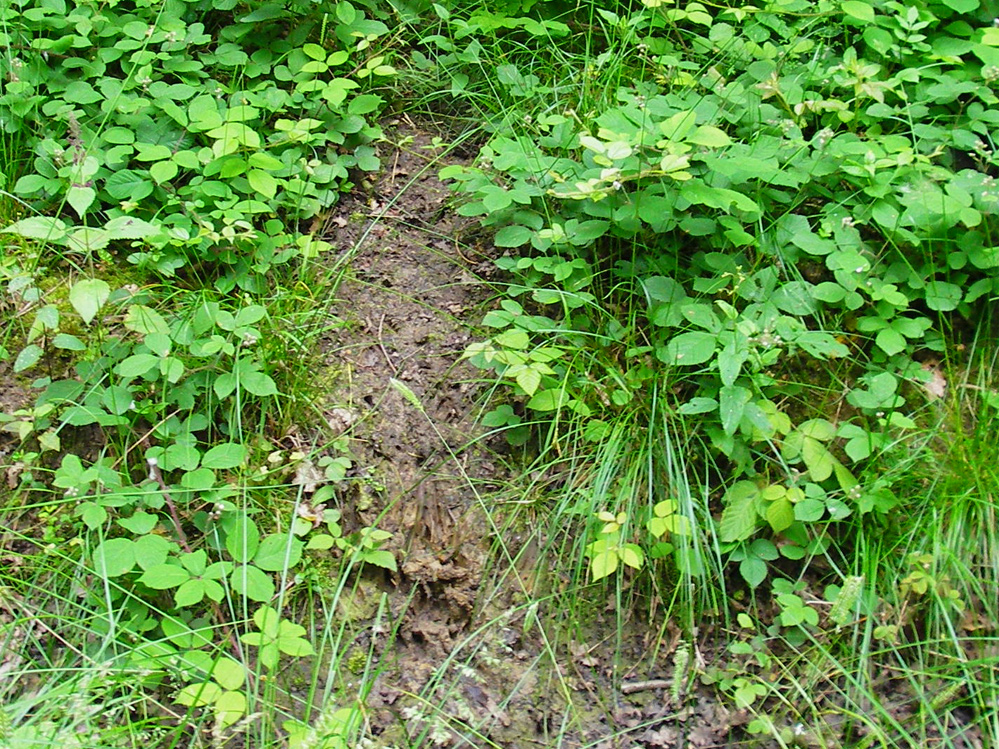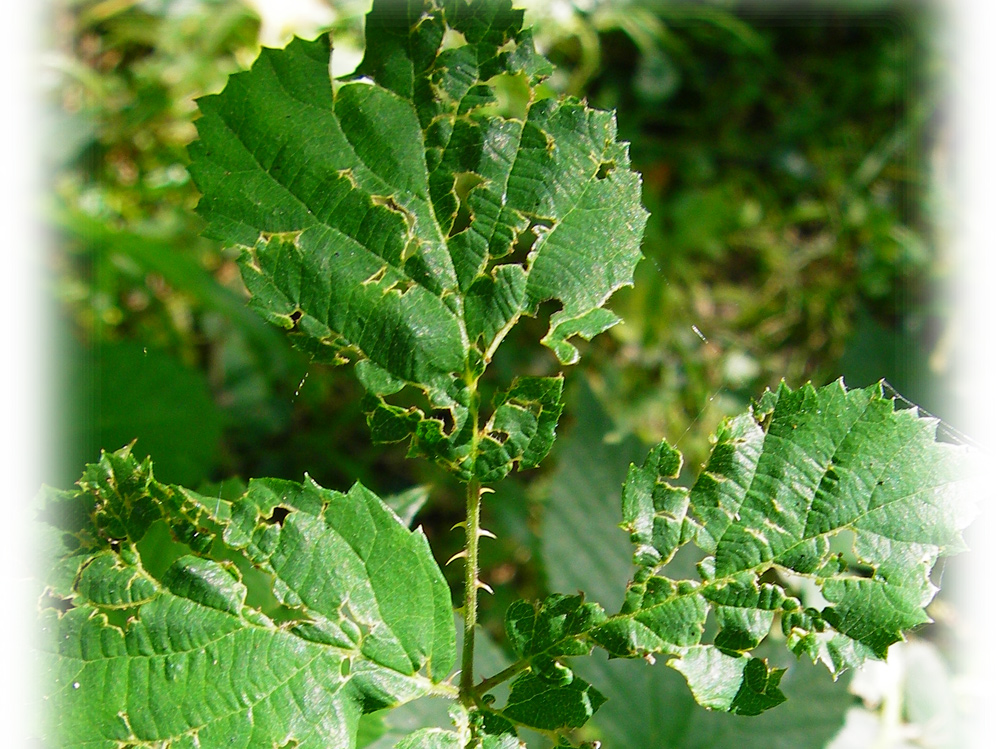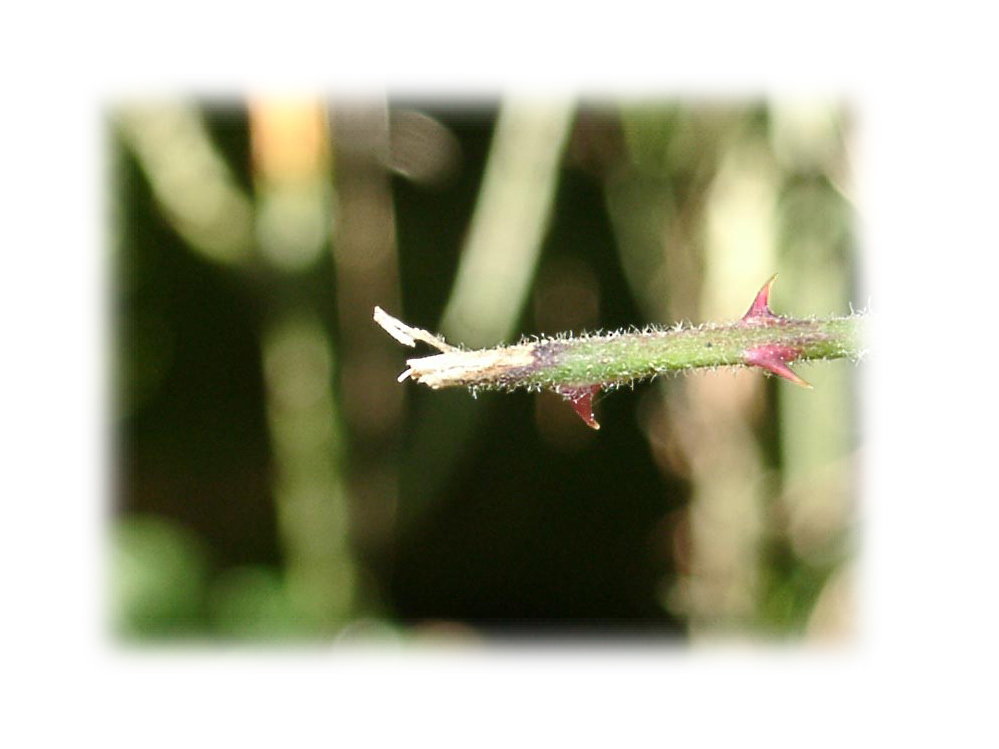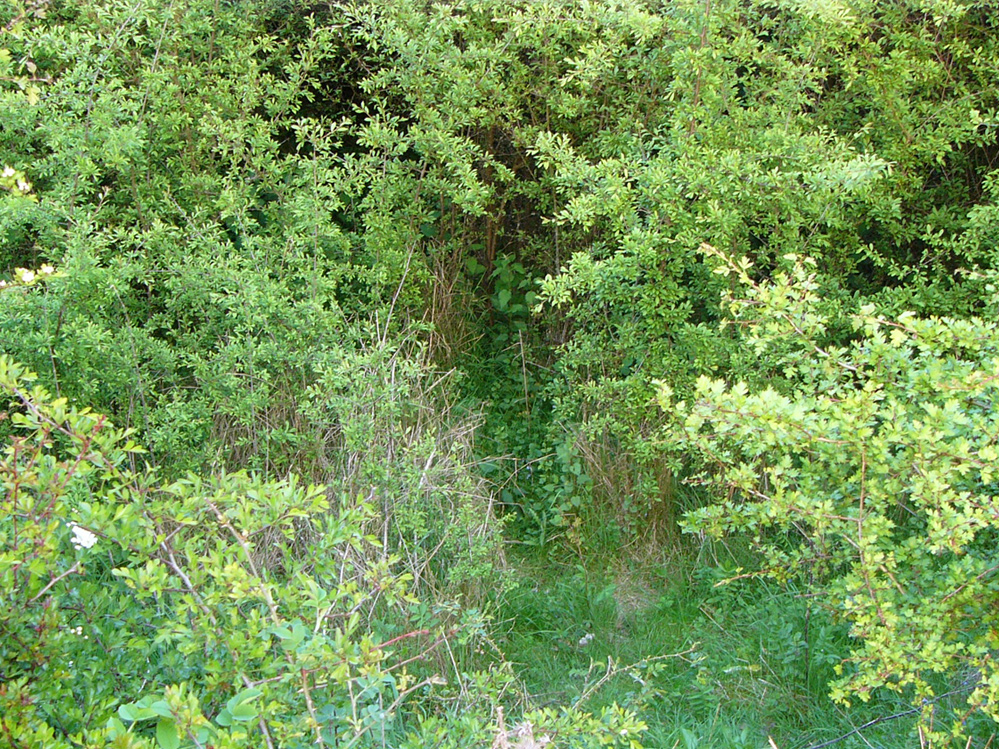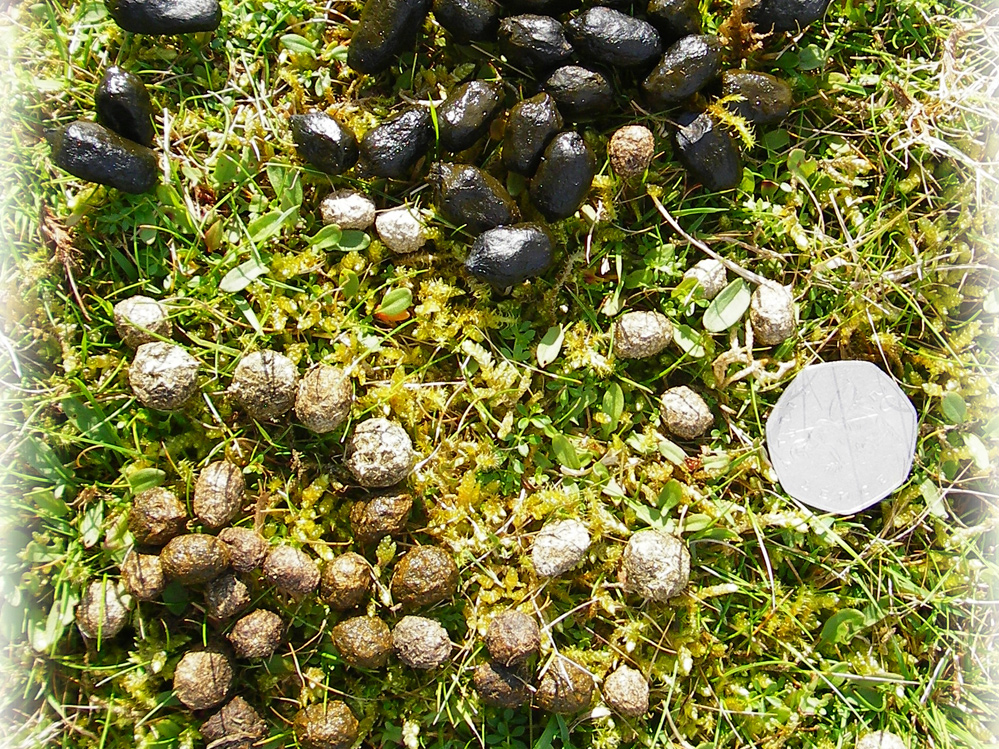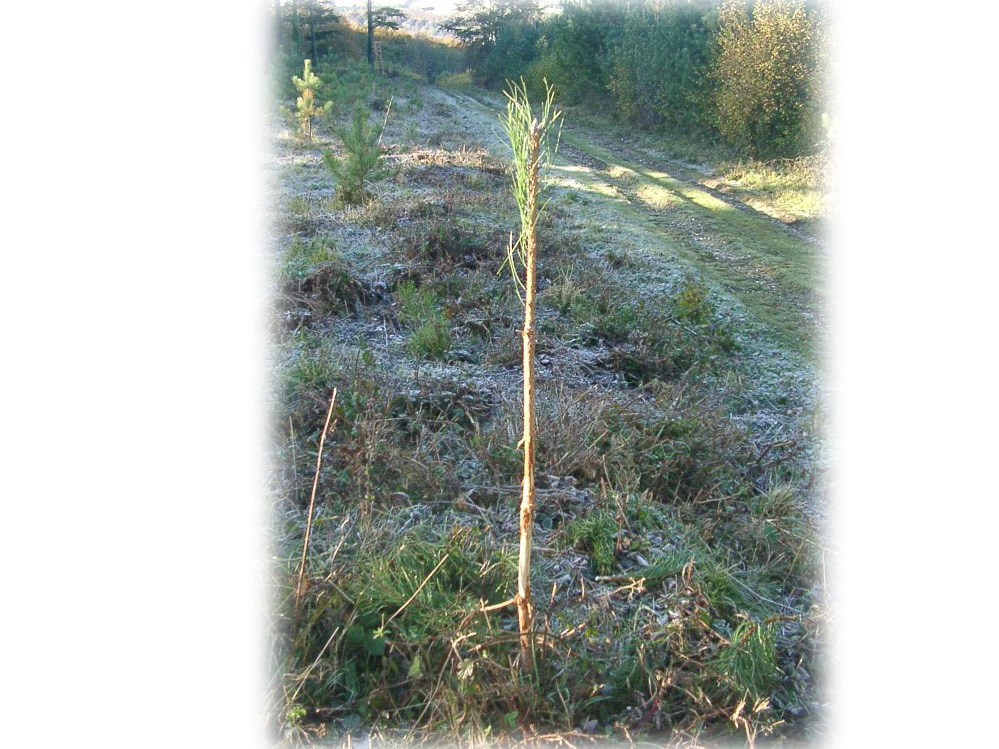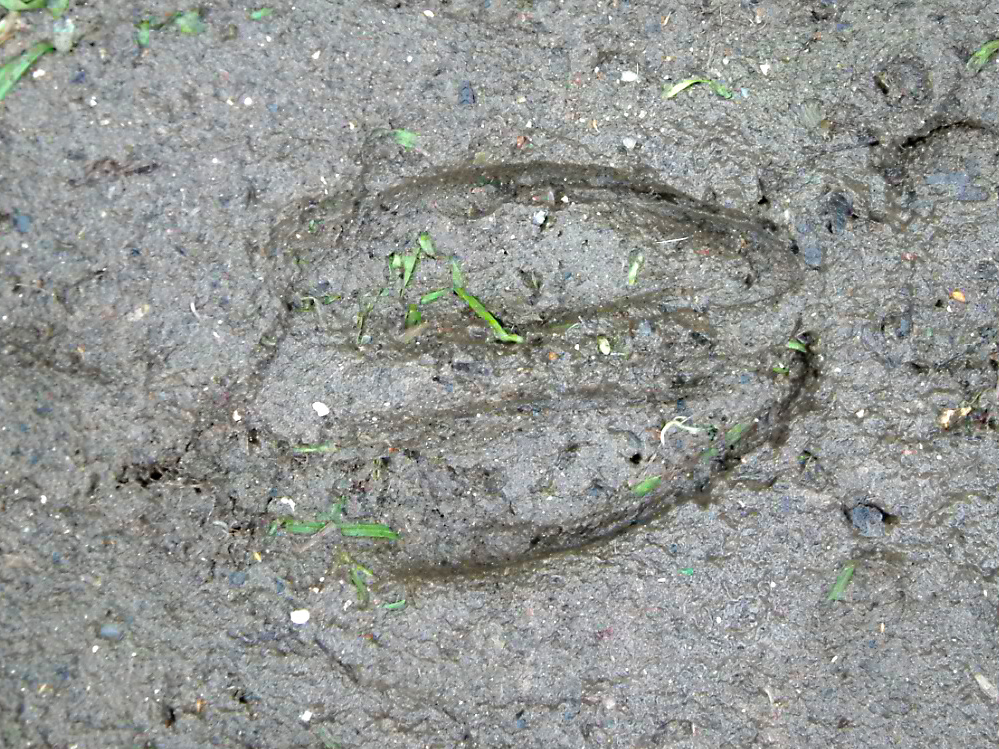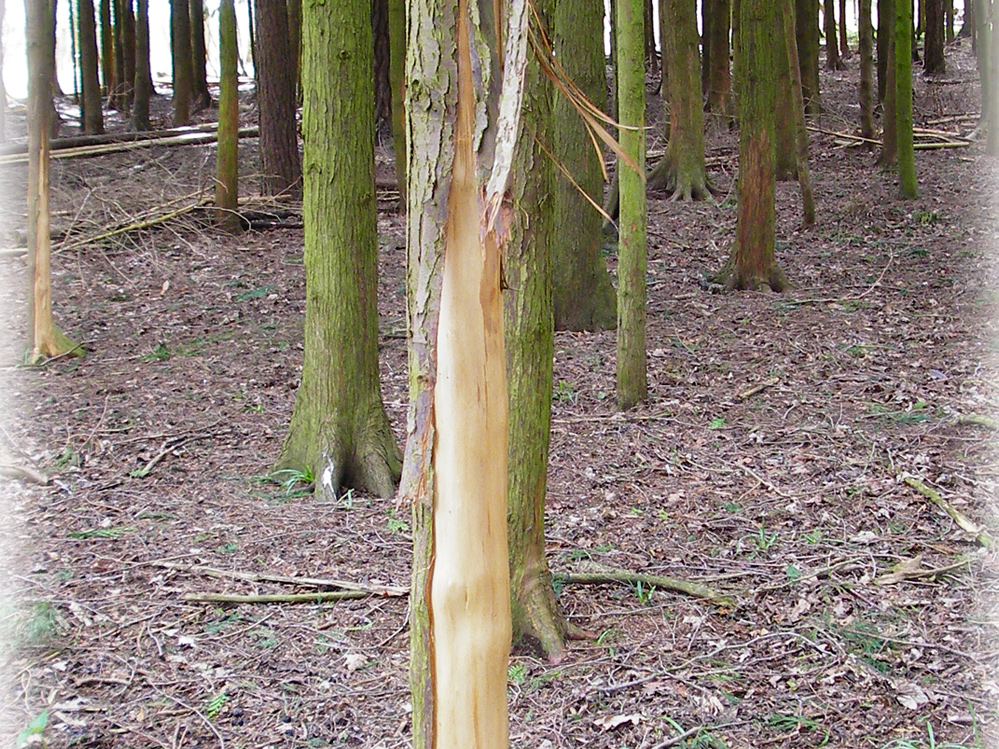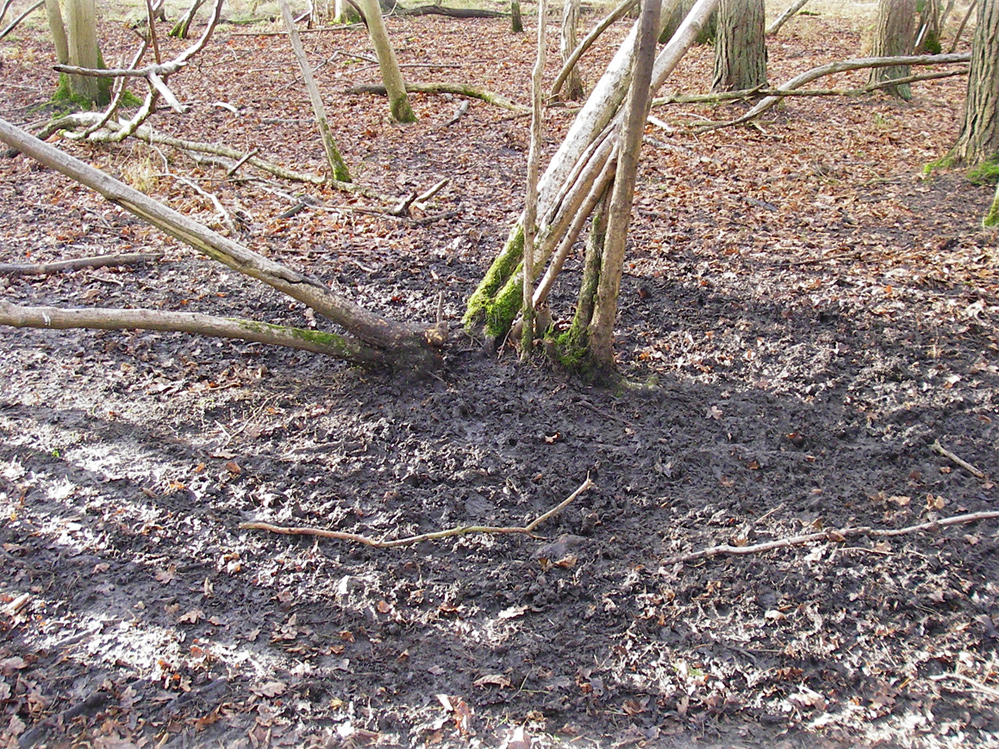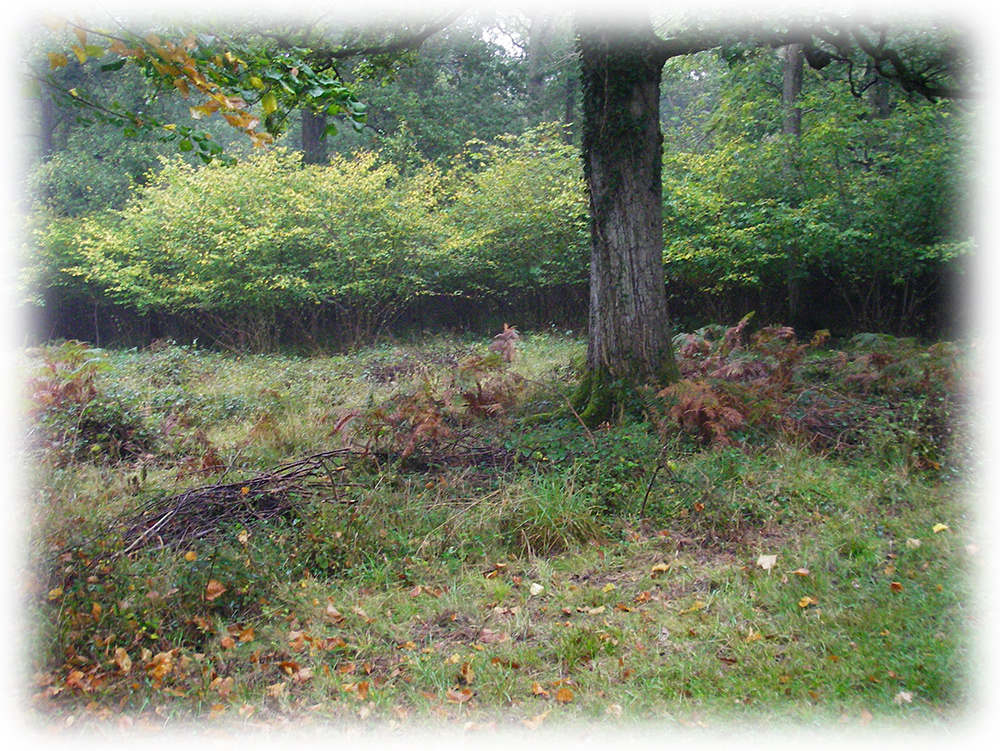
browse line
Introduction
Deer are not always easy to see but wherever they go they leave signs of their presence. Careful observation can help to confirm that deer are in the area and how they are affecting their surroundings. This guide describes typical deer signs and should be regarded as companion reading to the Deer Ecology/Behaviour, Deer Species, Deer Impact and Impact Assessment guides. There are many deer identification publications available so the appearance of the deer themselves is not described here (see Further Info below).
Browse line
If other browsers such as sheep, cattle or horse are not present, one of the best indicators that deer are present in woodlands is the presence of a horizontal “browse line”. This may be particularly obvious on such plants as climbing Ivy or the lower branches of trees or shrubs. The height of the browse line can give some indication as to the deer species present, where more than one species is responsible the browse line height usually reflects the most numerous species or the largest. Deer can stand briefly on their hind legs to feed which can mean browsing is sometimes higher than expected, this is especially true in deer parks. Muntjac can reach high leaves by breaking stems to bring them within reach.
Bite marks
Deer “graze” eating plants at ground level and “browse” at a higher level, eating buds and leaves, especially the tips of leading and side shoots of trees and shrubs. Woody shoots freshly damaged by deer will often show a clean cut on one side (usually the lower) and a ragged tear on the other due to the biting action of the lower incisors against the fleshy pad of the upper jaw (they have no upper incisors). This type of bite is also characteristic of other ruminants e.g. cattle, sheep and goats, but fortunately such animals usually leave other obvious signs of their presence. Rabbits and hares, which have opposing incisors, leave a cleaner, scissor like cut and often part of the stem will be left on the ground.
Brambles are a favourite food and usually show deer browsing clearly.
Provided it is fresh, plant damage by insects, fungi and weather conditions should not easily be confused with deer damage.
Racks
Deer use regular paths (“racks”), these are often obvious where deer cross woodland boundaries, rides or ditches but can also be seen within woodland compartments. The number of racks and the degree of usage can give some indication as to deer density.
Slots
Deer hoof marks (“slots”) are characteristically pointed, more so than most domestic livestock. The size and shape varies with species but also with age, so where more than one species is present it might be possible to identify one of the larger species by an adult slot but it might not be so easy to tell the difference between younger animals and adults of a different species.
Dung
Deer dung is typically in the form of individual pellets which tend to be cylindrical with one end pointed and the other dimpled. Pellets are usually found in “pellet groups”, small piles or strings, but are sometimes stuck together. Semi-liquid “pats” may be produced by scouring animals or by males in the rut. The size and shape varies with species but also with season and age so where there are more than one species present it might be possible to identify one of the larger species by adult droppings but there could be confusion between younger animals and adults of a smaller species. Rabbit and Hare dung tends to be much more fibrous than deer and more or less spherical.
Couches
Deer beds (“couches”) will often have hair in them. Deer hair is hollow and kinks like a drinking straw when bent and is thus distinguishable from that of most other mammals. Hair is often found on the ground as a consequence of moulting or fighting, or suspended on wire fences where deer pass.
Bark stripping
Deer will “strip” bark from trees and shrubs with their teeth, the tooth marks often being made vertically along the trunk and of a size and height relevant to the species. Damage can extend well up the trunk as strips are pulled from the tree. Usually smooth or soft barked, semi mature trees are chosen and damage can begin suddenly. Bark damage by other animals such as horses, rabbits, squirrels and voles tends to be quite distinctive and with much wider/narrower tooth marks.
Fraying
When they are in hard antler male deer will use their antlers to “fray”, removing the bark of trees or tall plants (such as thistles). Larger species may comprehensively “thrash” trees, breaking side and higher branches. Sika and sometimes red stags will bole score trees with their antler points. The timing and height of antler damage may indicate the species responsible.
Wallows
Red, Sika and Fallow create wallows in damp/wet areas. Nearby there will often be rubbed and muddy trees. Wallows are often created by males during the rut but all Red deer like to wallow and a herd may have permanent wallowing sites.
| Species | Browse line (m)* | Fraying (m)** | bark stripping (m)*** | Adult dung (mm) | Adult slot (mm) |
| Red Fallow Sika | 1.6 | 0.5-1.4(1.8) | 0.3-1.5+ | 22x14 | 80x60 |
| Fallow | 1.4 | 0.6-1.2 (1.6) | 0.3-1.4+ | 16x10 | 70x50 |
| Sika | 1.4 | 0.6-1.2 (1.6) | 0.3-1.4+ | 16x10 | 70x50 |
| Muntjac | 0.6 | 0.1-0.4 | 0.15-0.5(rare) | 10x6 | 25x20 |
Measurements are approximate averages only
* may be higher when standing on hind legs
** usual range and max
*** + indicates strips may be pulled higher up trunk
Further Info
Mayle, B.A. (1999) Managing Deer in the Countryside. Forest Research Practice Note.
Prior,R. (2007) Deer Watch – A Field Guide. Swan Hill Press.
Harris, S. and Yalden, D.W. eds. (2008) Mammals of the British Isles. 4th ed. Mammal Society
[printfriendly]
